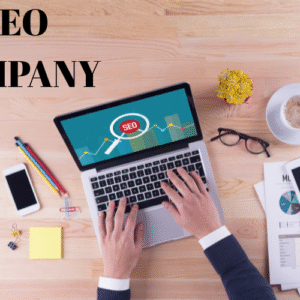In today’s competitive digital landscape, businesses need efficient tools and strategies to manage marketing, sales, and customer service. HubSpot, a leading CRM and marketing automation platform, offers a comprehensive suite of tools to streamline these processes. However, the key to maximizing HubSpot’s potential lies in proper HubSpot agency onboarding. By implementing a structured onboarding approach, agencies can ensure seamless workflows, reduce manual effort, and boost overall productivity.
What Is HubSpot Agency Onboarding?
HubSpot agency onboarding refers to the structured process by which an agency sets up, customizes, and integrates HubSpot to align with a client’s business goals. This process includes technical setup, workflow creation, automation implementation, team training, and continuous optimization. Effective onboarding ensures that all teams—marketing, sales, and service—can utilize HubSpot efficiently, creating a unified system for managing leads, campaigns, and customer interactions.
Why Effective Onboarding Streamlines Workflows
Without proper onboarding, teams may struggle with disorganized data, ineffective automation, and underutilization of HubSpot features. Effective onboarding addresses these issues by:
- Standardizing Processes: Establishes clear workflows for marketing campaigns, lead management, and sales pipelines.
- Reducing Manual Work: Automation of repetitive tasks frees up your team to focus on strategic activities.
- Enhancing Team Collaboration: Clear role definitions and centralized data foster seamless interdepartmental communication.
- Ensuring Consistent Reporting: Custom dashboards and analytics tools provide real-time insights into campaign performance.
- Accelerating Adoption: Structured training equips teams with the skills to use HubSpot confidently from day one.
With these benefits, onboarding transforms HubSpot from a tool into a streamlined system for operational excellence.
Steps to Streamline Workflow with HubSpot Agency Onboarding
1. Define Goals and Objectives
Begin by identifying your key business objectives. Discuss with your HubSpot agency:
- Desired outcomes for marketing, sales, and service
- Key performance indicators (KPIs) to track
- Target audience and lead management strategies
Setting clear goals ensures that onboarding efforts are aligned with your business needs, creating a workflow that supports growth.
2. Conduct Technical Setup and Integration
The foundation of workflow optimization is a well-configured HubSpot environment. Key setup tasks include:
- Connecting your CRM, website, and email systems
- Importing and organizing contacts and lead data
- Installing tracking codes for web analytics
- Integrating third-party tools like social media, chatbots, and project management platforms
Proper integration prevents data silos and ensures smooth flow of information across teams.
3. Map Out Processes and Automate Tasks
HubSpot’s automation capabilities are central to streamlined workflows. During onboarding, agencies can:
- Create automated lead nurturing sequences
- Set up task reminders for sales follow-ups
- Build service ticket pipelines for customer support
- Automate email campaigns and social media posting
By mapping workflows and automating routine tasks, teams spend less time on manual operations and more time on high-value activities.
4. Customize Dashboards and Reports
Effective dashboards provide real-time visibility into workflows. Agencies create reports tailored to your KPIs, including lead conversion rates, campaign performance, and sales progress. Custom dashboards enable quick decision-making, identify bottlenecks, and track efficiency improvements.
5. Train Your Team for Optimal Adoption
Even the best workflow automation fails without skilled users. Onboarding includes targeted training sessions covering:
- CRM management and deal tracking
- Email marketing and lead nurturing
- Automation workflows and triggers
- Reporting and analytics tools
Empowered teams can fully leverage HubSpot to maintain smooth, productive workflows.
6. Test and Optimize Continuously
Before full-scale implementation, agencies test workflows, automation rules, and integrations to ensure everything functions as intended. Post-launch optimization helps:
- Identify workflow inefficiencies
- Improve automation accuracy
- Refine campaigns for better results
Continuous optimization guarantees that workflows remain effective as business needs evolve.
Best Practices for Workflow Optimization During Onboarding
- Document Processes: Maintain records of workflows, automation setups, and integrations for future reference.
- Prioritize High-Impact Areas: Focus on automating tasks that consume the most time.
- Maintain Data Accuracy: Clean and categorize data before importing to avoid disruptions.
- Leverage HubSpot Resources: Utilize HubSpot Academy and community forums for additional insights.
- Regularly Review Performance: Use dashboards to monitor workflow efficiency and make adjustments as needed.
Common Challenges and Solutions
Even with expert guidance, some challenges may arise during HubSpot agency onboarding:
- Data migration errors: Resolve by validating and cleaning data before import.
- Team resistance: Address through clear communication of benefits and hands-on training.
- Workflow misalignment: Align processes with business objectives and continuously refine automation.
Proactive planning and collaboration with your agency mitigate these challenges and ensure smooth workflow adoption.
Why Partnering with a HubSpot Agency Matters
Certified HubSpot agencies bring expertise, experience, and proven onboarding frameworks. They help:
- Set up HubSpot tailored to your business needs
- Train teams for efficient adoption
- Ensure seamless integrations and automation
- Continuously monitor and optimize workflows
Partnering with an agency reduces errors, accelerates adoption, and ensures that HubSpot becomes a tool for efficiency rather than complexity.
Conclusion
Effective HubSpot agency onboarding is the key to streamlining workflows, reducing manual effort, and maximizing productivity. By defining goals, setting up systems, automating processes, and training teams, agencies ensure a seamless implementation of HubSpot.
Streamlined workflows not only save time but also improve collaboration, reporting, and decision-making across marketing, sales, and service teams. Investing in structured onboarding today lays the foundation for operational excellence and sustainable growth tomorrow.
HubSpot, when implemented effectively, becomes more than software—it becomes the engine that drives efficiency, collaboration, and measurable business success.








